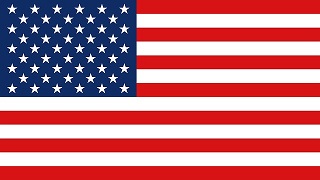Hello and welcome to our company Acme Defense Contracting Inc. We are pleased you could join us for this interview today for our XYZ job opening. Before we get to know you let us tell you a little about our company. We have a rich history as a DoD contractor going back 20 years when we responded to our first development contract RFP. Our company is real innovative with a strong R&D background and we cut our teeth fielding one of the first SATCOM Radio systems. Being a prime contractor for our first major DoD contract was quite the eye opener for us. Our team and our subs endured quite the learning curve and had to keep the FAR close at hand during those early days.
It all started with our BD manager identifying an opportunity on FBO that aligned with our company’s core competencies. From there he sent out the RFP, SOW and WBS for our management team to review. We had to pay close attention to Section L and M to ensure we fully understood the work and could be competitive so we would stand out to the SSA lead. We were so relived to learn this first opportunity would not require EVM.
Once we determined it was a fit, we assembled our BD team and created our RFP response team and War room. Our proposal PM held a kick off and assigned book bosses and set up our schedule for our blue, pink, red, green, gold, and white reviews. After we submitted our proposal we had to respond to several EN’s and then update and submit our FPR. Waiting to find out if we won was a very nervous time for our company given the time and money it took to build our proposal. Fortunately for us we were notified of our award of a five plus two sole source IDIQ contract and we immediately began to execute our TP.
After our program kick off with the Government PM, DPM, CO and the government team we immediately began assessing the updated IDIQ contract, DD254, PWS, WBS, SRD, ORD and all CDRLS and associated DIDs to ensure we understood and could begin executing the requirements.
While a portion of our first contract was FFP, the majority was CPAF with a few CPIF and T&M TOs planned. Accordingly, the CO did not give us a lot of slack when it came to ensuring we addressed all the IDIQ Ts & Cs and TO directives. Fortunately we were assigned a very good COTR and the program had several senior A&AS and SETA contractors to help us understand the programs operating environment.
Early on the CO advised us we may have to use a UCA for one of our first TOs as the government needed for us to get started ASAP. Our Finance lead immediately began coordinating with our contracting shop to prepare WADs and charge number matrices and asked if the first TOs would be 3400, 3080 or 3600 funds. While this was happening our PMO began refining our IMS to address the initial TO requirements. Likewise we set up multiple IPTs and set about implementing our SE processes and aligning them to the standard V-Model. Our first major TO required the full SE lifecycle to include IBR, SFR, SRR, PDR, CDR, TRR, FAT and SAT.
It was tough those first few months as our Engineering Manager refined our SEMP and our Logistics manager refined the ILSP. Likewise, we had to stand up DoDAF designs and processes to capture all our designs. Our CM manager was busy setting up our CM standards and establishing our ECP process as well as inquiring with our Engineering manager on how many CIs we would be tracking. While that was happening our QA manager reviewed the QASP and refined our QCP. Also, during this time our KM was busy setting up our IDE and our Cybersecurity Lead was assessing all IS boundaries and all operating SOPs. While all this was going on our PM and DPM were busy reviewing the AF Plan and updating the PMP and ensuring all requirements were flowed down to our subs. It would be 90 days before our first QPMR and we knew time would fly so as they say in the Navy “it was all hands on deck.”
I am pleased to say we hit all our critical milestones that first year and successfully achieved IOC on our major TO delivery and supported the government team as they fielded the system and achieved FOC. We learned a lot in those early years and I am pleased to say we capitalized on all our early lessons learned and have grown into a formidable company and competitor in the DoD SATCOM niche.
So that is a little about us, tell us a little about you and what you know about working on a DoD contract and how you can help us succeed….
If you read through this and it all made sense to you then congratulations you must have had a lot of experience working with DoD contracts and contractors during your military career. If you only understand a portion of this narrative or none at all and want to explore getting a job as a DoD contractor after you leave active duty then I encourage you to return to this website.
The goal of this website is to be a premier resource to assist veterans find and excel in an exciting career as a DoD Contractor. Over the near term I will be posting a series of articles that breaks down the basics of DoD contracting and the key industry jargon presented in this article and more. Also, if you are a recent veteran then I encourage you to explore the website and the resources I have compiled to assist you with your transition.
Thank you for your service and I look forward to assisting you find and excel in a DoD contracting job and career. – Ben

